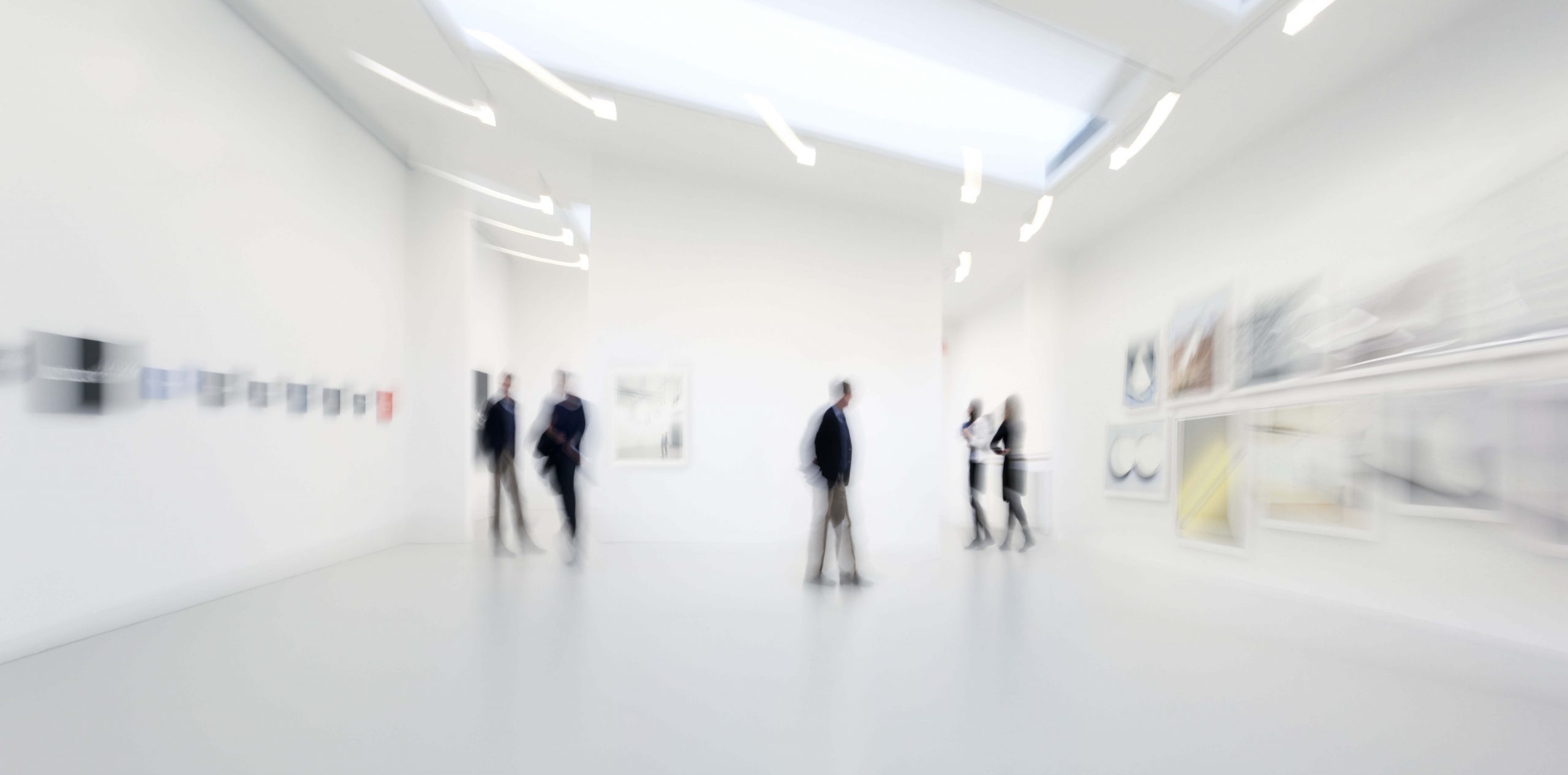Collecting is truly a passion. And if your subject of focus is art, it becomes even more important to be able to proceed confidently without being lost in a vast ocean of creativity filled with too many attractive options, so that you may obtain pleasing results. Perhaps, the most difficult part of it all is taking that very first step. But do not let all this intimidate you; if you become mesmerized and end up daydreaming in the presence of artworks with a burning desire to share your life with them, but you do not know exactly where to start from, welcome to our guide to collecting, especially made for you.
In this series, we will first examine the main sources of information that will be guiding us through our journey. Then we discover how we determine our collection’s framework, the points to be careful about in acquiring and preserving the artworks and other additional issues around collecting.
Chapter l – Getting started: How do I acquire the knowledge?
Once you will start collecting art, you will see the immense technical and stylistic variety, the very high-paced news flow and the huge number of exhibitions taking place one after another, and you will sometimes find it difficult to keep up with all these developments. In other words, to reach accurate information as quickly as possible will be of utmost importance. Thankfully, in today’s world, we have countless sources at our disposal. Let us examine the main ones that will help you develop your art history knowledge a better understanding of the current artistic practices.
Museums and Cultural Institutions
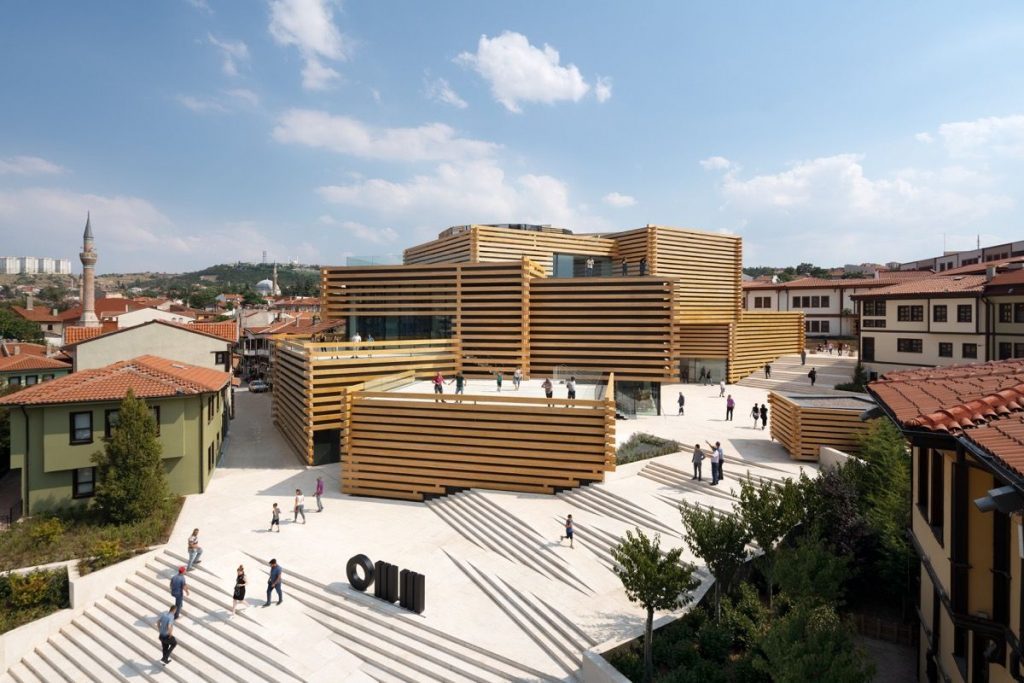
There are several museums and non-profit art spaces like İstanbul Modern, Salt, Arter, Meşher, Sabancı Museum, Pera Museum, Elgiz Museum, Yapı Kredi Art, Akbank Art, Şekerbank Açık Ekran, Bilsart, Milli Reasürans Art Gallery and Borusan Contemporary in Istanbul; Cer Modern, Evliyagil Museum in Ankara, Baksı Museum in Bayburt and Odunpazarı Modern Museum in Eskişehir where you may view distinguished examples of contemporary art from Turkey and the world at large; you may also make use of their libraries and join their workshop/seminar programs, and subscribe to their weekly newsletters stay informed about their activities. Regarding the must-visit museums in the world, the top items in our list include Whitney and the New Museum (New York), MoMA (New York and San Francisco), LACMA and the Broad (Los Angeles), Guggenheim (New York and Bilbao), Tate Modern and Tate Britain (London), Centre Pompidou (Paris), MACRO (Rome), the Museum of Contemporary Art Shanghai and the Museum of Contemporary Art Tokyo. Even if you cannot visit them in person or as often as you would like to, it would be really beneficial if you followed them online.
Biennials
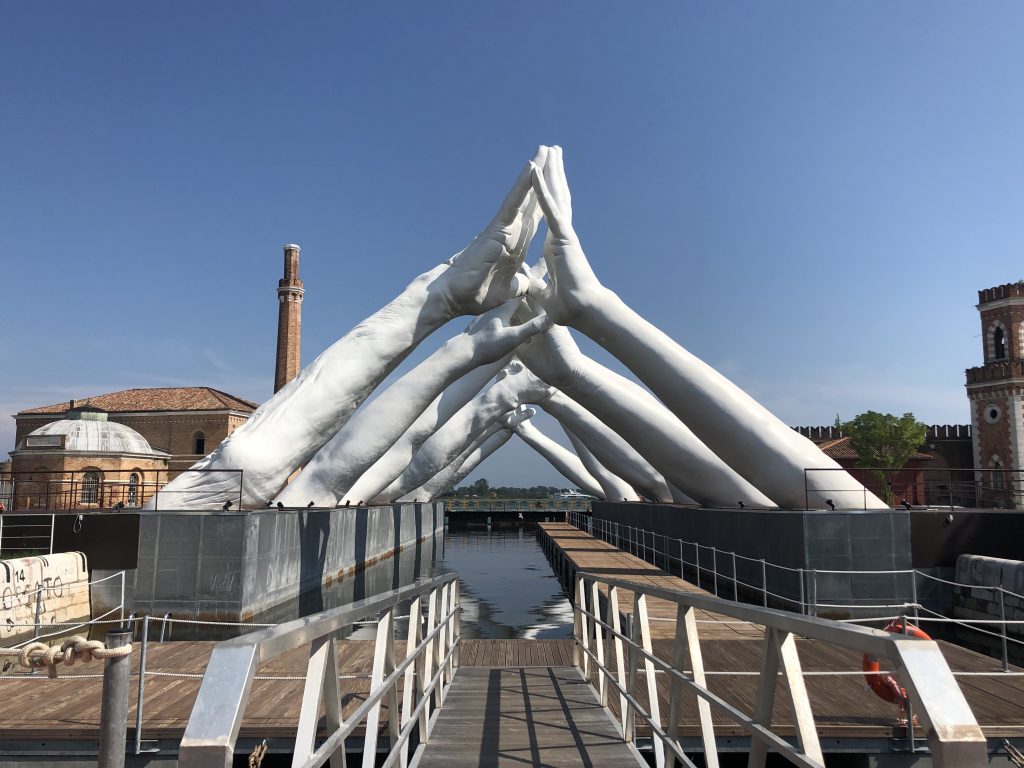
The biennials’ biggest advantage is their more fluid structure compared to the museums, and thus their ability to take an almost instantaneous picture of the art scene at the time they happen. If you are particularly interested in sociopolitical issues occupying the world’s agenda and it is important for you to express this concern of yours in your collection, then you should definitely follow the biennials. In addition to the Istanbul Biennial as one of Turkey’s leading international art events, biennials also take place in Çanakkale, Sinop and Mardin, with their audiences growing at every new edition. The leading international biennials, on the other hand, include Venice, Sao Paulo, Documenta, Sydney, Havana, Sharjah, Manifesta, Whitney, Shanghai, Guangzhou, Berlin and Liverpool.
Galleries

As the institutions both setting and reflecting the latest artistic trends, galleries are another main source of information for the emerging collectors. Since their exhibitions change more frequently compared to the museums, it is essential that you visit your galleries of interest on a monthly basis. Plus, although museums and biennials are the leading developers of our understanding of art, once we define our scope more precisely and arrive at the acquisition phase, the art market dynamics and gallery relations step into the picture. The biggest advantage of working with the galleries is the range of services they offer to their clients, including a warranty for the artwork’s authenticity and technical assistance. If you are particularly interested in the styles or the artists represented by a specific gallery, it becomes even more important that your relationship is long-term and based on mutual trust. For instance, if you decide to sell an artwork that you had acquired in the past from a certain gallery, that gallery is able to make you an offer to buy the artwork back from you. Similarly, in the face of potential damages, technical problems and similar issues, you know you have a place to turn to for consultancy and assistance, especially when you are unable to reach the artist. The trusting relationship with the gallery also comes with some privileges like special discounts and previews. Let us not forget to mention the gallery weekends as events to be followed as well. During these events organized in various cities including Brussels, Barcelona, Milan, Mumbai and Shanghai with the most spectacular one taking place annually in Berlin, the leading galleries in that city organize ambitious exhibitions and some stay open for visitors until late at night. If you dislike visiting booths at art fairs and staying indoors at warehouse-like buildings for several hours, these events allowing you to take long walks outside and to explore the city at the same time are ideal for you.
Auctions
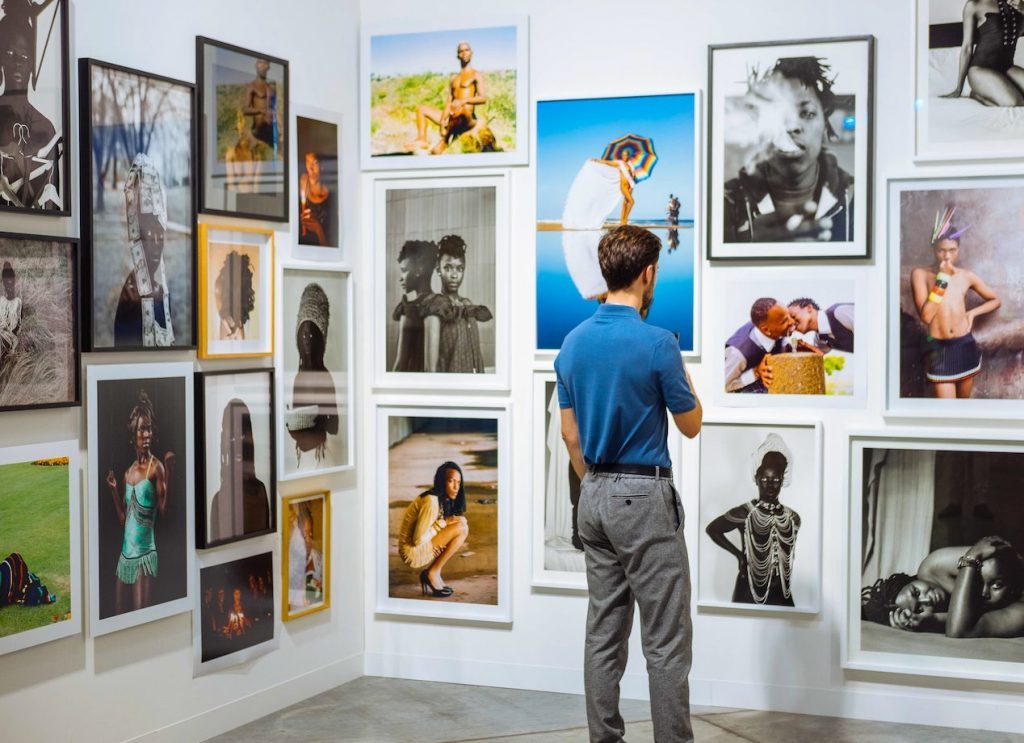
While galleries focusing on contemporary art mostly exhibit the latest works by the living artists, at auctions we are able to come across artworks by both the living and the deceased artists that have changed hands twice or even more. Even though it is not a great idea for the emerging collectors to start acquiring their first works from the auctions, it could be quite useful to attend them to obtain the market data and to get to know other collectors. The options and price ranges offered at the auctions are more suitable for the buyers whose collections have already reached a certain level and who are pursuing more specific items; for example, they might be collecting works by a particular artist whose works from a certain period are only available second-hand. The bidding, on the other hand, is a must-see and a highly recommended, unique experience. Making observations for your future acquisitions is both beneficial and entertaining.
Fairs

Art fairs offer us the possibility to keep up with the global art agenda, to become more familiar with the main actors in the art scene and to instantaneously compare the prices of the works by artists we are interested in that are presented by different galleries. The fairs’ seminar programs featuring various art professionals are particularly useful for developing our knowledge on current artistic approaches and collecting. In Turkey, Contemporary Istanbul and Tüyap Art Fair take the lead, with Step as a young addition to this year’s fair list. Alternative events resembling an art fair but not considered one, such as Mamut Art Project, Akbank Contemporary Artists Prize Exhibition, Base and Young-Fresh-Different introduce many young artists to the public and they are at least as important as the art fairs for the emerging collectors. Furthermore, it is also absolutely necessary for contemporary art enthusiasts to follow some of the leading international art fairs. These include Art Basel (Basel, Miami, Hong Kong), Frieze (London, New York, Los Angeles), the Armory Show (New York), ARCO Madrid, ARCO Lisboa, Art Dubai, Scope (New York, Miami, London, Basel), Art Cologne and TEFAF (Maastricht). By the way, do not skip routes like Africa and South America either. The 1:54 (London, New York, Marrakech), Cape Town Art Fair and Art Joburg for the African contemporary art, Zona Maco for South America, and Art India and Seoul Art Fair for Asia should take their place in your list in addition to the Western-oriented art fairs mentioned above. We highly recommend you to visit at least one international art fair in person for a more direct experience of the global art scene. This way, you would expand your horizons and compare local prices with the ones in the world at large. What is more, if you decide to add to your collection works by some artists from other countries, the connections you establish with the international gallerists will have great medium and long-term benefits.
Art Consultants

Project-based or long-term collaboration with an art consultant is another helpful source for your collecting journey. If you have a very busy work schedule and cannot find the time to attend all the art events in your agenda, your art consultant can visit the art fairs and galleries and collect some preliminary information on your behalf; this way, he or she can filter the content and you may directly focus on the options that suit your purposes without losing precious time. On the other hand, if your collection’s investment value in the long run is as important to you as your individual preferences, your art consultant may also be able to provide you with some guidance in that direction. But you have to make sure that the person you turn to for consultancy is a professional with the proper expertise in his or her field and a correct sense of work ethic. The best clues regarding this matter are to be found in the positive references offered by his or her previous individual and institutional employers.
Books and Magazines
Although the internet is currently our most frequently used source of information, books and magazines have a special place in our lives. You may find a list of books recommended for all emerging collectors on Art50.net’s library page.
In our country, Milliyet Sanat, Artam Global, Genç Sanat, Art Unlimited and Rh+ are some of the leading art magazines available on a monthly basis. You may also consider subscribing to international publications such as Art Forum, Flash Art, Frieze Magazine, Art Review, Art News, Art in America, Juxtapoz, Wallpaper, The Art Magazine, Apollo Magazine and Aesthetica.
Courses and Seminars
As another favorable option, a growing number of seminars, guided tours and education programs are becoming available to the emerging collectors who would like to develop a better understanding of contemporary art. Throughout the process, you may also make new friends with similar interests and with whom you may enjoy visiting exhibitions together. Spot Projects founded by Tansa Mermerci Ekşioğlu, herself a collector, organizes high-quality events in this field. You may also safely follow the workshop and seminar programs of the art institutions mentioned above, such as Istanbul Modern.
If you have the means to spend long periods abroad, it would be a great idea to attend the short education programs offered by the two famous auction houses Sotheby’s and Christie’s, as well as Saatchi Gallery and MoMA. But we highly recommend you to check the course tuition fees in advance as they require a sizeable budget.
Online Sources and Social Media
The internet is an invaluable source for those interested in contemporary art and collecting. Informative articles, interviews, blogs, videos, and even social media posts by art professionals become saviors for those without the time to visit the art events or living in areas far from the cities where the majority of such events takes place.
Online platforms like Artsy.net abroad and Art50.net in Turkey offer 24/7 access to the latest works by countless young and successful artists via one simple click, in addition to offering informative articles and exciting interviews with various art professionals on their blogs.
Finally, we definitely recommend you to follow the Facebook, Twitter and Instagram accounts of all the events and publications mentioned in the previous sections.
Chapter ll – Defining the Priorities: How do I Decide Which Artworks to Collect?
Let us assume that we feel our knowledge is adequate for departing on our collecting journey. This means our job has only just begun.

“What is the basic principle that makes an art collection good?”
The key element distinguishing an art collector from an artwork stacker is the former’s commitment to a specific purpose and clearly defined priorities from the very beginning. Buying any artwork that you like without giving it some thought is not a good approach for building a collection.
Of course, we should not think of these priorities as rules carved into stone; your criteria might change over time, which is extremely natural. At the end of the day, we will keep encountering brand new artistic approaches and never-seen-before techniques as we go along. We might as well get to know a new gallerist from another country at an international art fair and start working with him or her, who, in turn, could introduce us to an artist, movement or even a country’s art previously unknown to us and can cause a shift in our understanding of art.
In short, setting some selection criteria for ourselves shall not mean completely closing ourselves to change. Nevertheless, in this gigantic universe of artworks, it is of great use to define some basic principles at the very first step and to stick to them for a while, so that your collection can constitute a meaningful whole. Now, let us take a closer look at the main criteria you should consider in defining your collection’s initial framework.

Investment? Or Pleasure?
Some artwork stackers collect art for investment purposes only. They expect their collection’s value to increase in the future and they make their selections solely based on this criterion. But the choices of those individuals we refer to as good collectors are often independent from the artworks’ potential for a future increase in monetary value. They ask themselves, “do I really want this artwork to enter my life, do I really want to share the same environment with it”. Best collections emerge from this attitude. This is why you should not buy an artwork you are not excited about or interested in just based on a probable future value increase. The storage spaces of buyers with an exclusive focus on investment value are filled with artworks that have never seen daylight since their acquisition and perhaps will never do so until they change hands again. The same work could very well have been at the hands of a collector who really wanted to share his or her living spaces with it, and could be exhibited somewhere many more people could enjoy it, perhaps at home or at the office. This, in turn, would please both the collector and the artist who put his or her effort into the work and wished for it to have the exposure it deserved.

The investment value is already nothing but an educated guess based on previous sales data anyway. An artist whose works are expected to gain value in the long run might suddenly lose his or her popularity. Similarly, an artist with a currently low market success might become interesting for the art market in the future due to any reason, and his or her works might begin to be sold at much higher prices. If you loved it and acquired it, in the first case scenario it would maintain its spiritual value even if it lost its economic one. In the second case scenario, on the other hand, the work you had acquired without economic expectations would also generate financial value in the future. Put differently, if your priorities as a collector are based on passion and taste, you can be sure your collection will immensely enrich your life independently of its investment value.
Emerging Artists: A Great Place to Start
Is there an emerging collector who does not want to acquire high-quality works with a modest budget? One of the best ways to do so is to target young artists’ works. As you are just beginning to understand your priorities and testing your likes and dislikes, sacrificing big monetary sums for one single artwork is highly risky. Plus, by collecting young artists’ works, you will be supporting them financially and helping them sustain their careers in the long run.
Click here to discover the artists and their works available on Art50.net.
Horizontal and Vertical Collecting
In building a collection’s framework, we make use of two basic strategies: horizontal and vertical collecting.
- We may regard a predominantly horizontal collection as an instantaneous picture of a very large area. Collecting one work each by as many artists as possible from a certain time period is a good example for it.
- Predominantly vertical collections focus on narrower areas and approach them in depth with a much larger time frame. For example, trying to collect all the works by one single artist is a typically vertical collecting endeavor.

Yet, no collection exists that is exclusively based on one of these two principles. It is not a realistic target for a single collector to acquire one work by each and every existing artist from a certain period; similarly, we seldom come across a collection featuring all the works ever made by one single artist. Nevertheless, we may still prioritize one of them over the other. If discovering new artists is more exciting for you, you are more suited for horizontal collecting. If you are highly motivated by the idea of finding and collecting as many works as possible by a small number of artists, vertical collecting is more suitable for you. This decision would allow you to use your limited budget, time and energy efficiently and in line with your purposes. This way, you would both have more obtainable goals and would eventually build a more meaningful and enjoyable collection.
Techniques, Regions and Themes
Up to this point, we have been talking about the artists and the historical periods regarding the subject of the horizontal-vertical balance in collecting. But additional criteria exist that may help us delineate our route more precisely. Come and let us examine them more closely:
Technique/material: Perhaps, you are exclusively interested in oil paintings on canvas; or black and white photographs have a special place for you. Once you determine your technical priorities, you may start wondering whether you prefer horizontal or vertical collecting in terms of artists and periods.
Enjoy hundreds of carefully curated artworks in Painting, Sculpture, Digital Art and Print on Art50.net.
On the other hand, also make sure you take your preservation and exhibition possibilities into consideration at least as much as you do your areas of interest when determining your technical priorities. Paintings and photographs require different conservation and storage conditions. Even the artworks’ dimensions will be important in this regard. Let us assume your living space is not suitable for exhibiting or storing large works; in this case, you might want to limit your collection’s scope to the artworks under a certain size: such as works on paper no larger than 50×70 cm, or paintings on canvas no larger than 100×100 cm.
Geography: You may also prefer defining a geographical scope for your collection. You might be exclusively interested in the artists born in Eskişehir. Or you might have a special tendency towards Eastern European art. You might as well admire the African contemporary art. Once you express such a preference, you choose to deepen your quest within one geographic region. But it is up to you to build a predominantly horizontal or vertical selection within that region. If you do not want your initial departure point to be geographical, you might as well turn it into one of the collection’s subcategories. Departing from the techniques or the themes we will be talking about shortly, you may proceed with collecting artworks from different parts of the world produced in these techniques and themes.

Theme: One of the key criteria for the collectors is probably the theme they want their collection to emphasize. Of course, it is impossible to reduce an artwork’s meaning to one single theme. This is precisely why the artworks produced by various artists in different historical periods in a variety of techniques can communicate with each other when placed within the same collection and they can build new conceptual relationships. You might choose certain thematic criteria directly related to the artwork’s subject and style such as portrait, landscape, still life, abstract, texture or color while you might also pursue subjects of personal interest such as city, nature, gender, migration, popular culture or ecology.
In Art50.net’s special selections, you may enjoy the artworks grouped under thematic categories you are interested in. Click here to browse the selections.
Once you decide on your collection’s main themes, you might prefer using the other criteria as your subcategories and proceed from there. The latter will become clearer as you go along depending on your priorities, and new ones will emerge and transform the older ones. In fact, the most exciting aspect of collecting is this never ending journey of self-discovery, as is the discovery of artworks.
Chapter lll – A Life Surrounded by Art: How do I Preserve, Exhibit and Store My Collection?
We have probably come to the most enjoyable step of all; we may now start planning how we will exhibit our collection in our living and working spaces. With the correct approach depending on the artwork’s characteristics, our home, office or even our garden can become an art space in the true sense of the word. In this chapter, we will also see how to store the artworks while they are not on view.
Preservation and Exhibition
Every artwork can be exhibited in a variety of ways depending on its technical characteristics; what matters is to choose the method that does not interfere with the artwork’s aesthetic wholeness while protecting it from external risks as much as possible. Yet, there are some general points to be careful about when choosing a place for an artwork, regardless of its specific technique.

Most Popular Mistakes:
- Installing the artworks at the heights above or below the eye level unless indicated otherwise;
- Installing the artworks, either hanging them on the wall or placing them on a pedestal, at a position that is too close to direct heat sources like radiators, heaters, fireplaces or even lamps and spotlights;
- Keeping artworks in places such as balconies or terraces that can be too hot, cold or humid, except for the sculptures made for the outdoors;
- Exhibiting water-sensitive artworks in places like the kitchen or the bathroom where water and vapor is abundantly found;
- Entrusting artworks to people with insufficient expertise for framing, restoration or repair, often with the delusion that it will be less costly;
As today’s artists use many unusual materials, we strongly recommend you to either consult the artist, the gallery or the auction house you acquire the work from for more specific preservation and storage guidelines.
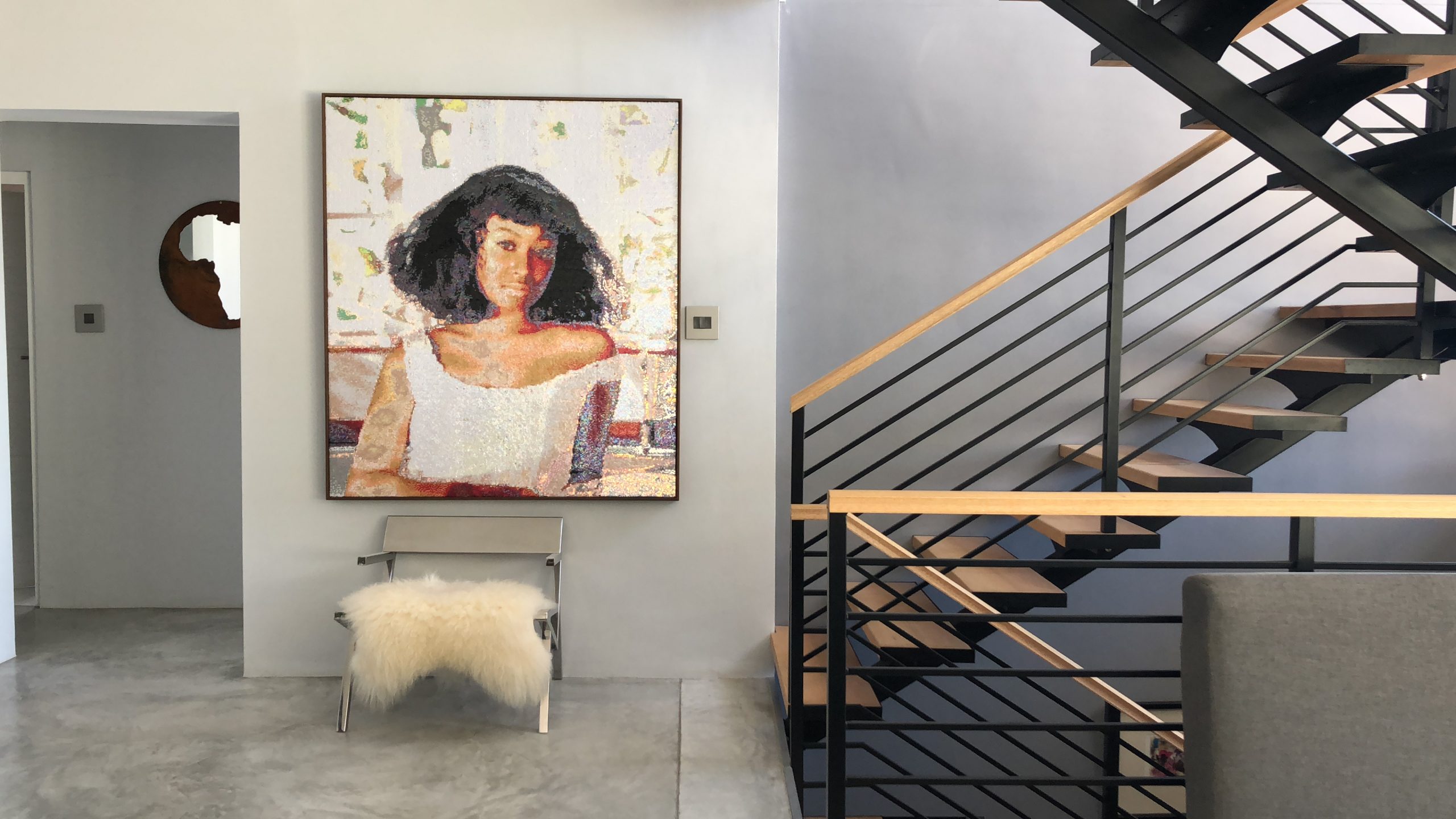
Now, let us focus on the exhibition alternatives that are suitable for the materials and techniques used in the production of artworks.
Works on Paper
- They are works that can be produced with various materials such as pencil, pastel, ink, lithography, silkscreen, linocut, etching, aquatint, watercolor, gouage, pigment print, digital print, mixed media and even collage.
- If not framed, they can be stained or damaged very quickly. Therefore, if you have acquired the work in an unframed state, we highly recommend having it framed even if you are not planning to hang it immediately;
- When choosing the frame design, take into consideration its harmony with the artwork and not with the other elements in the exhibition room. Avoid highly ornamented and colored designs as much as possible, and consider these issues if you are also going to use a paspartout;
- If you cannot decide between a wooden and a plastic frame, choose the former; the options made from natural materials will yield better results both in terms of aesthetic quality and durability;
- If the artwork has a rich texture and thickness, i.e. if its third dimension is evident (collage, sewing, paper cut, etc.), using a box frame is almost inevitable;
- You might especially want to pursue the multiple editions of those artists whose unique works’ prices go beyond your means. If the edition such as a print or a photograph has its edition number (like Ed. 1/15) and the artist’s signature on the front, it would be better if that information remained visible also after the work is framed; this is because editions are reproduced only in a very limited number of copies with the artist’s involvement and they are considered authentic just like the paintings on canvas;
- It is important to make sure that the works on paper are not exposed to direct and continuous sunlight as this would accelerate their fading.
- As an alternative to a regular frame, artists sometimes present their photographs or digital prints in a plexiglas sandwich or a lightbox. Even though it is slightly more expensive than framing, plexiglas sandwich has two advantages; there is no visible frame around the work and it is immune to the undulance that may appear in some photographs as time passes. However, it is permanent, and removing the photograph from it and putting it into another frame is impossible. In a lightbox, on the other hand, the photograph is printed onto a semi-transparent surface and exhibited in front of a thick box frame containing neon tubes or LED stripes. The key issue here is to have a source of electricity on or near the wall where the artwork is going to be exhibited.
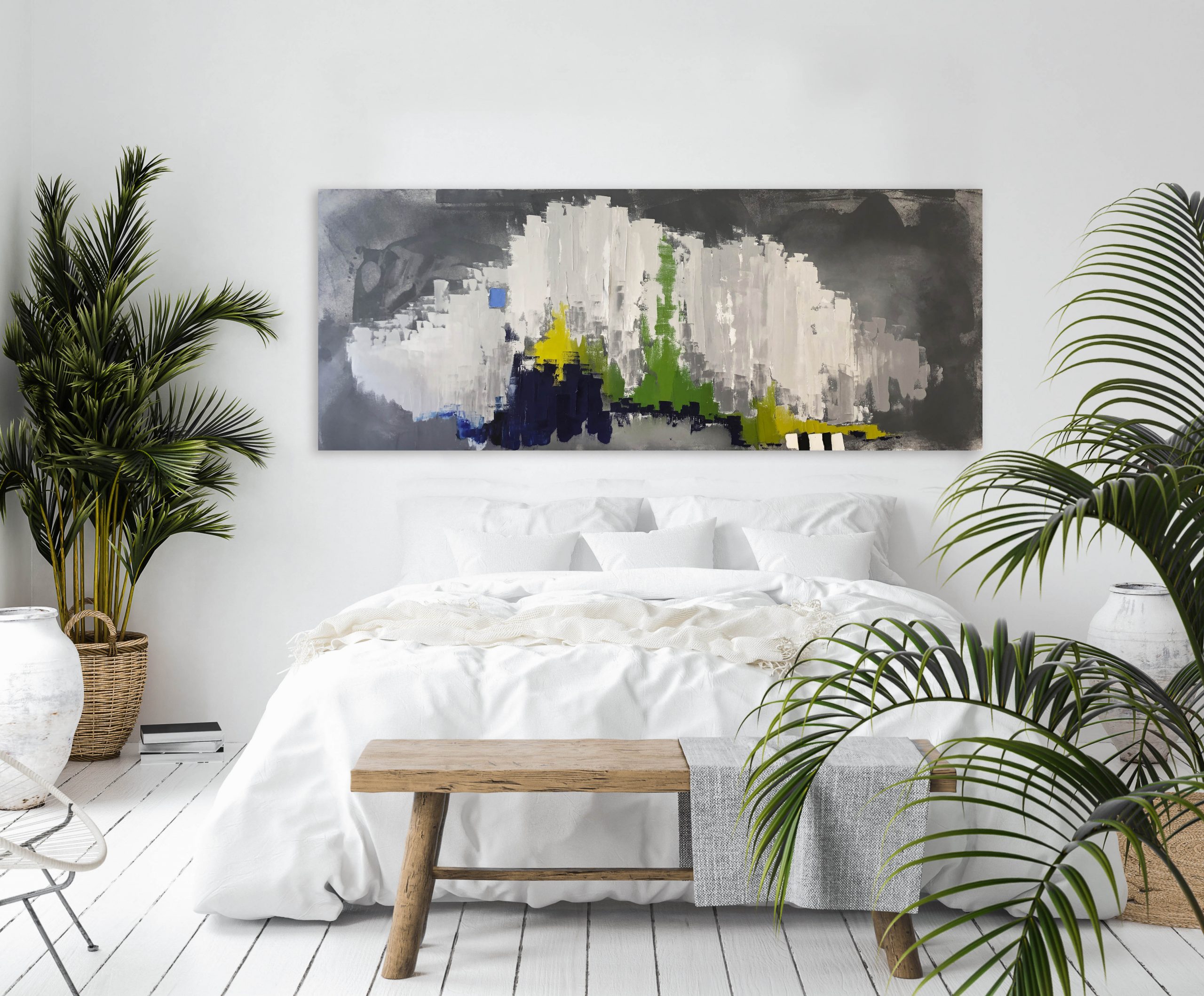
Paintings on Canvas
- Paintings on canvas are generally stretched onto a wooden stretcher bar and varnished, and need no further framing. In some cases, even the lateral surfaces are part of the painting and thus need to remain exposed. Yet, artists sometimes present some of their works in a framed format; under those circumstances, it is better to preserve the original frame. In any case, the presence of a frame will minimize the risk of the artwork being damaged during transportation;
- Except for the very old and fragile works in museum collections demanding special protection, placing a glass in front of a painting on canvas is an almost completely abandoned practice. The rich texture of a painting on canvas is lost once it goes behind the glass;
- As today’s artists have a broad range of protective and visually enriching varnishes at their disposal that can both be applied onto oil and water-based paints, the resistance to sunlight of oil and acrylic paintings on canvas is considerably high. However, extremely fluctuating temperature and humidity conditions similar to the outdoor spaces still have detrimental effects on them.
Sculptures and Objects
- Today, the materials used in the making of sculptures and objects manifest an almost endless variety. In addition to the more traditional materials such as marble, bronze, glass, ceramic and wood, these works often contain paper, textile, plexiglas, metal wire, neon, silicone, plaster and even assemblages of found objects;
- If your collection will predominantly consist of such works, it is crucial to plan in advance how you will use your space. For instance, a highly fragile work shall not need to be moved very often due to the routines of those living within that space;
- Depending on the artist’s guidelines, you may install the work directly onto the pavement, hang it on the wall or to the ceiling, or place it on a pedestal or a shelf with the proper dimensions;
- If the sculpture is suitable for the external environment, you may also install it in your balcony, garden or terrace.

Video and New Media
- Examples of video and new media art that we have especially begun to see more often in the office buildings, are considered the most challenging art categories for individual collectors. However, in essence, they are no different from the others;
- If you are planning to collect video art, you will most probably need a screen hung on a wall and a flash disc. Some works have the precondition of being exhibited on a projector; if you intend to exhibit the work at home on a screen, it will be more appropriate to ask for the artist’s approval regarding such matters;
- Collecting new media art can also become an extremely enjoyable activity if the artist’s and the gallery’s technical assistance is available. Nevertheless, we recommend the emerging collectors to select relatively less complicated works in terms of technical characteristics and exhibition modalities at least until their main preferences are clear and they become acquainted with the basic technical knowledge.
Storage
As already mentioned, in the light of your pace of acquisitions and your preferences, it is essential for you to organize a space where you may safely store your artworks when they are not on view.
- The stored works should not receive direct sunlight or be exposed to extreme temperature or humidity conditions;
- The storage space should be sizeable enough to contain your entire collection at least in the medium run. Sometimes, you might be constrained to give up on the acquisition of an artwork you like and find affordable only because you lack the space necessary for it. This, in turn, would negatively affect your collection’s development as well as your motivation;
- If you have a collection growing fast within a short period of time and you have already begun to experience shortage of space at home and at the office, you may also consider renting a storage space from one of the companies that are active in several districts, offering affordable space suitable for artworks. This way, you may safely preserve your collection without sacrificing the spaces you use on a daily basis;
- Another issue as important as storage space is to create a collection inventory as soon as you begin collecting. The earlier you adopt this practice, the easier it will be to keep track of your artworks’ locations as your collection keeps growing, and the faster you may access your collection data. It would also be helpful to file the additional documents (certificate of authenticity, invoice or installation guidelines if available, etc.) and the inventory records together.
Finally, let us remind you that, alongside the artwork, the artist or the gallerist should also provide you with a certificate of authenticity containing information such as the artwork’s title, year of production, technique, dimensions and edition number. The certificate of authenticity should be handed to the buyer with each and every original work, regardless of it being unique or an edition; in short, demand it from your artist, gallerist, or auctioneer, and insist!
So, you are ready to embark on the collecting journey; now it is your turn! Wishing that you deeply enjoy your new life full of art…
İpek Yeğinsü

